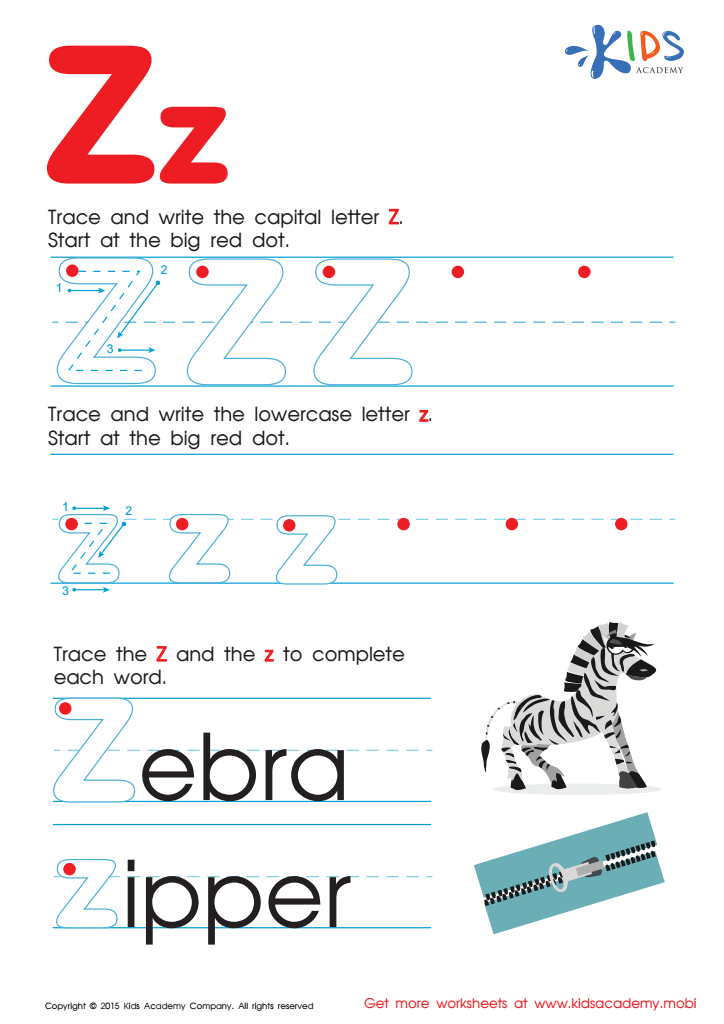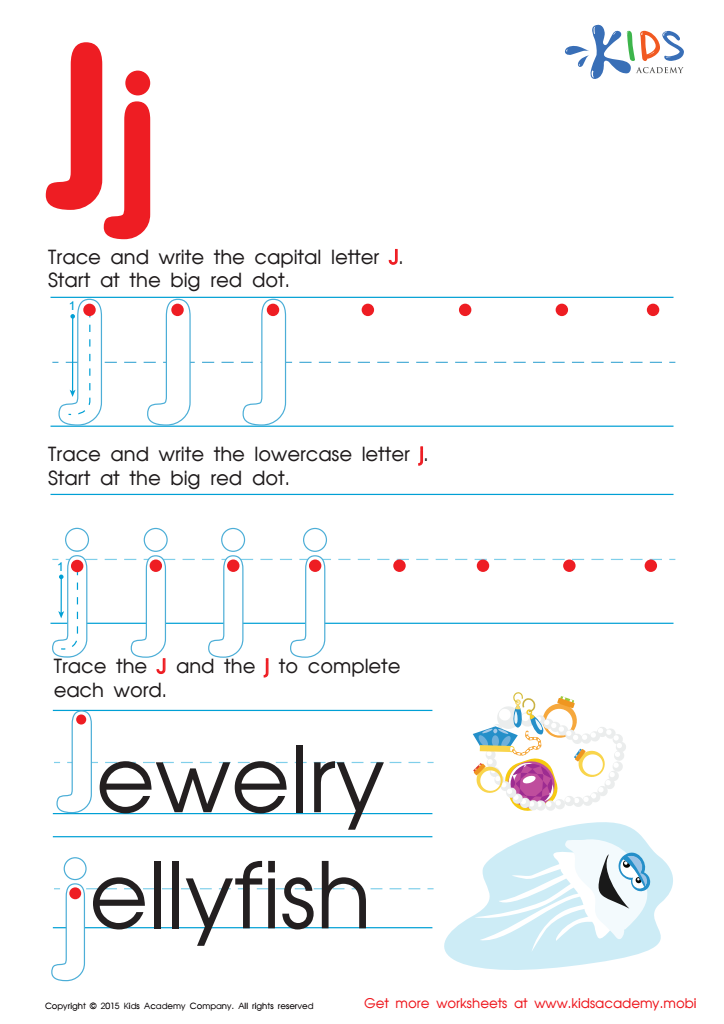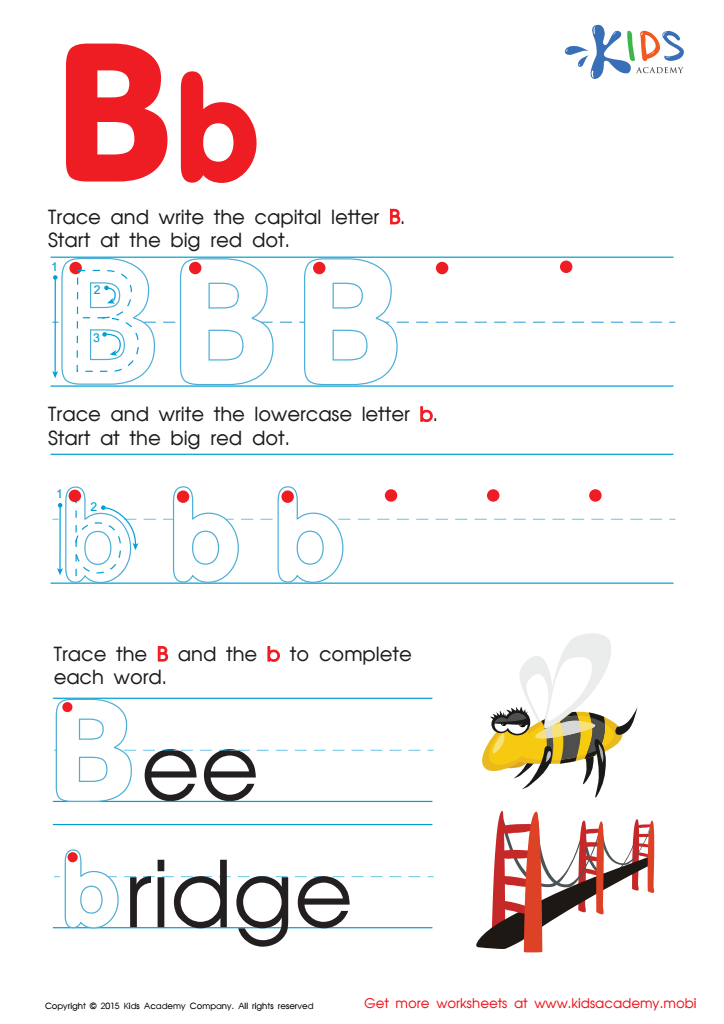Handwriting improvement Tracing Letters Worksheets for 3-Year-Olds
3 filtered results
-
From - To
Discover our engaging Handwriting Improvement Tracing Letters Worksheets designed specifically for 3-year-olds! These fun and interactive worksheets provide young learners with the perfect foundation for developing essential handwriting skills. Each worksheet features colorful illustrations and guided tracing activities that encourage little ones to practice letter formation, improve fine motor skills, and build confidence. Additionally, our resources promote letter recognition and phonetic awareness, making learning enjoyable. Ideal for preschool settings or home use, these worksheets are a fantastic way to ignite your child's enthusiasm for writing! Start their handwriting journey today and watch them flourish in their early education!


Letter Z Tracing Page


Letter J Tracing Page


Letter B Tracing Page
Handwriting improvement through tracing letters for 3-year-olds is crucial for several reasons. First, developing fine motor skills at this age lays the foundation for effective writing later on. Tracing helps young children strengthen the small muscles in their hands and fingers, enabling them to grip crayons, pens, and pencils with confidence.
Second, engaging in letter tracing fosters cognitive development. By recognizing and identifying letters, children enhance their alphabet knowledge, which is vital for early literacy. This practice not only aids in letter recognition but also introduces children to phonemic awareness, as they begin to associate sounds with symbols.
Moreover, tracing offers a sense of accomplishment and boosts self-esteem. As children see their progress with each stroke, they become motivated to continue honing their skills. This early success can build a lasting positive attitude towards learning and writing.
Lastly, handwriting plays a critical role in communication. By supporting handwriting improvement early on, parents and teachers equip children with essential tools for future educational endeavors. Encouraging tracing activities nurtures patience, focus, and attention to detail, qualities that benefit young learners across all aspects of their development. Overall, early handwriting skills promote cognitive, emotional, and social growth in preschoolers.
 Assign to My Students
Assign to My Students

















